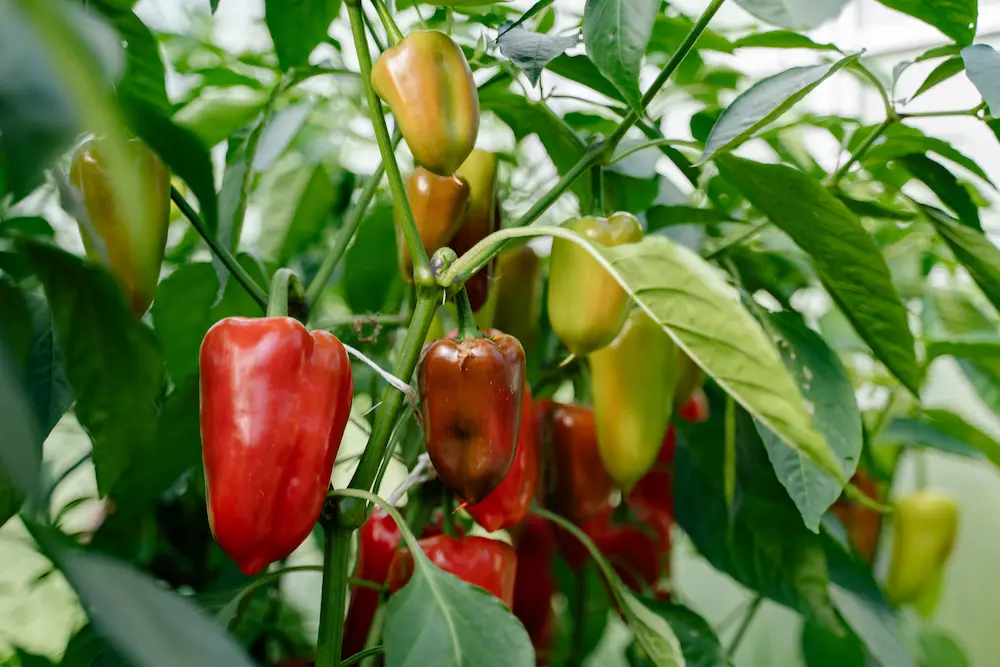Do you dream of having your own garden, but live in a small apartment or a house without a backyard? Don’t worry! You can still grow your own herbs, vegetables, or flowers with a vertical garden. A vertical garden is a type of garden that grows upward instead of outward, using vertical space to make the most of small areas. In this blog post, we will show you how to create your own vertical garden in your small apartment, step by step.
Key takeaways
- Vertical gardens are a great way to grow your own herbs, vegetables, or flowers in small apartments or homes without backyards.
- Choose lightweight plants with shallow roots that thrive in low-light conditions, such as herbs, leafy greens, succulents, and trailing plants.
- Select lightweight containers with good drainage, such as terra cotta pots, plastic pots, or hanging baskets.
- Use a high-quality, well-draining potting mix and avoid using garden soil. Hang your vertical garden securely using sturdy hooks, brackets, or shelves, and choose a spot with adequate sunlight and easy access for maintenance.
- Water and maintain your garden regularly, checking soil moisture levels and fertilizing every few weeks.
- Address common issues such as yellowing leaves, pest infestations, and mold growth promptly to keep your plants healthy.
What is a vertical garden?
A vertical garden is a type of garden that grows upward instead of outward, using vertical space to maximize growing area in small spaces like apartments or homes without backyards.
Benefits of a vertical garden
First and foremost, a vertical garden allows you to grow your own fresh produce, even if you don’t have a lot of space. This means you can enjoy the taste and health benefits of homegrown herbs and vegetables year-round.
Additionally, a vertical garden can improve the air quality in your home by filtering out pollutants and increasing oxygen levels. It can also add a beautiful and natural aesthetic to your living space, creating a relaxing and inviting atmosphere.
Step 1: Choose the right plants
The first step to creating a vertical garden is to choose the right plants. Not all plants are suitable for a vertical garden, so it’s important to choose plants that are lightweight, have shallow roots, and thrive in low-light conditions. Some popular options include herbs like basil, thyme, and oregano, as well as leafy greens like lettuce and spinach.
Other good choices include succulents, air plants, and trailing plants like ivy or pothos. When selecting your plants, consider their growth habits, light requirements, and water needs to ensure they will thrive in your vertical garden.
Step 2: Select the right containers
The next step is to select the right containers for your plants. You can use a variety of containers, including pots, hanging baskets, or even shoe organizers. The key is to choose containers that are lightweight, easy to hang, and have good drainage. Terra cotta pots are a popular choice because they are lightweight and porous, allowing for good air circulation and drainage.
Plastic pots are another option, as they are lightweight and come in a variety of sizes and colors. If you’re using a hanging basket or shoe organizer, make sure it has adequate drainage holes to prevent water from pooling and causing root rot. You can also use containers with built-in irrigation systems to make watering easier.
Step 3: Prepare the soil
Once you have your containers, it’s time to prepare the soil. Use a high-quality potting mix that is lightweight and well-draining. Avoid using garden soil, as it can be too heavy and may contain pests or diseases. You can also add a slow-release fertilizer to the soil to provide your plants with the nutrients they need to grow. Fill your containers with the potting mix, leaving enough space at the top for your plants.
Step 4: Plant your garden
Now that your containers are prepared, it’s time to plant your garden. Gently remove your plants from their nursery pots and place them in the containers, making sure to loosen the roots and remove any excess soil. If you’re using a hanging basket or shoe organizer, you may need to cut holes in the fabric to accommodate the plants. Once your plants are in place, fill in any gaps with additional potting mix and water thoroughly.
Step 5: Hang the garden securely
Once you have your plants and containers, it’s time to hang the garden securely. You can hang your containers on a wall, balcony, or even a fence. Make sure to choose a spot that gets enough sunlight and is easy to access for watering and maintenance.
Use sturdy hooks, brackets, or shelves to secure your containers and ensure they won’t fall off or damage your walls. If you’re using a heavy container, consider using a stud finder to locate the wall studs and secure the container directly to them. You can also use a trellis or other support structure to help hold up your vertical garden.
Step 6: Water and maintain the garden
Finally, it’s important to water and maintain your vertical garden regularly. Depending on the type of plants you choose and the climate you live in, you may need to water your garden every day or every few days. You can use a watering can or hose to water your plants, or consider using an automatic irrigation system to make watering easier.
Be sure to check the soil moisture level regularly and water deeply when the top inch of soil feels dry. In addition to watering, you’ll also need to fertilize your plants every few weeks to ensure they are getting the nutrients they need to thrive. Pruning and grooming your plants regularly will also help keep them healthy and looking their best.
Troubleshooting common issues
Even with the best care, sometimes issues can arise in a vertical garden. Here are some common problems and how to address them:
- Yellowing leaves: This can be a sign of overwatering or nutrient deficiency. Check the soil moisture level and adjust your watering schedule accordingly. If the problem persists, consider adding a balanced fertilizer to the soil.
- Pest infestations: Aphids, mealybugs, and spider mites are common pests that can infest indoor plants. Check your plants regularly for signs of infestation and treat with an organic insecticide or neem oil if necessary.
- Mold or fungus growth: This can be caused by overwatering or poor air circulation. Make sure your containers have adequate drainage and consider using a fan to improve air flow around your plants. Remove any affected leaves or stems and treat with a fungicide if necessary.
FAQ: Create a vertical garden in your apartment



How much sunlight does a vertical garden need?
Most plants in a vertical garden need at least six hours of sunlight per day. However, if you have a shaded balcony or a north-facing wall, you can still grow plants that prefer low-light conditions, such as ferns or hostas.
Can I grow vegetables in a vertical garden?
Yes, you can grow vegetables in a vertical garden. However, it’s important to choose lightweight, compact, and fast-growing varieties that don’t require a lot of space. Some good options include cherry tomatoes, cucumbers, and peppers.
How do I fertilize my vertical garden?
You can fertilize your vertical garden using organic or synthetic fertilizers. If you’re using a potting mix that contains fertilizer, you may not need to fertilize your plants for several weeks. However, if your plants start to show signs of nutrient deficiency, you may need to add more fertilizer.
Can I create a vertical garden indoors?
Yes, you can create a vertical garden indoors using artificial lighting or natural light from a window. However, it’s important to choose plants that thrive in low-light conditions and ensure that your containers have good drainage to prevent water damage.
Can I use regular garden soil in my vertical garden?
No, it’s best to use a high-quality, well-draining potting mix specifically designed for container gardening. Garden soil can be too heavy and may contain pests or diseases.
How often should I water my vertical garden?
Watering frequency depends on the type of plants, climate, and soil moisture levels. Check the soil moisture regularly and water deeply when the top inch of soil feels dry. Some gardens may need watering daily, while others can go a few days between watering.
How do I secure my vertical garden to the wall?
Use sturdy hooks, brackets, or shelves to secure your containers to the wall. If using heavy containers, locate wall studs with a stud finder and secure the containers directly to the studs. Alternatively, use a trellis or support structure to hold up your vertical garden.
What should I do if my plants start to yellow or wilt?
Yellowing leaves can indicate overwatering or nutrient deficiency. Check soil moisture levels and adjust watering accordingly. If the problem persists, consider adding a balanced fertilizer. Wilting may also signal underwatering or excessive heat exposure.
How do I deal with pests in my vertical garden?
Regularly inspect your plants for signs of pest infestations, such as aphids, mealybugs, or spider mites. If detected, treat the affected plants with an organic insecticide or neem oil. Maintain proper watering and air circulation to prevent pest issues.
Craving another DIY project? Learn how to make a DIY macrame wall hanging next!






Howdy! This article could not be written much better!
Looking through this post reminds me of my previous
roommate! He constantly kept preaching about this.
I will send this article to him. Fairly certain he’ll
have a very good read. Thank you for sharing!